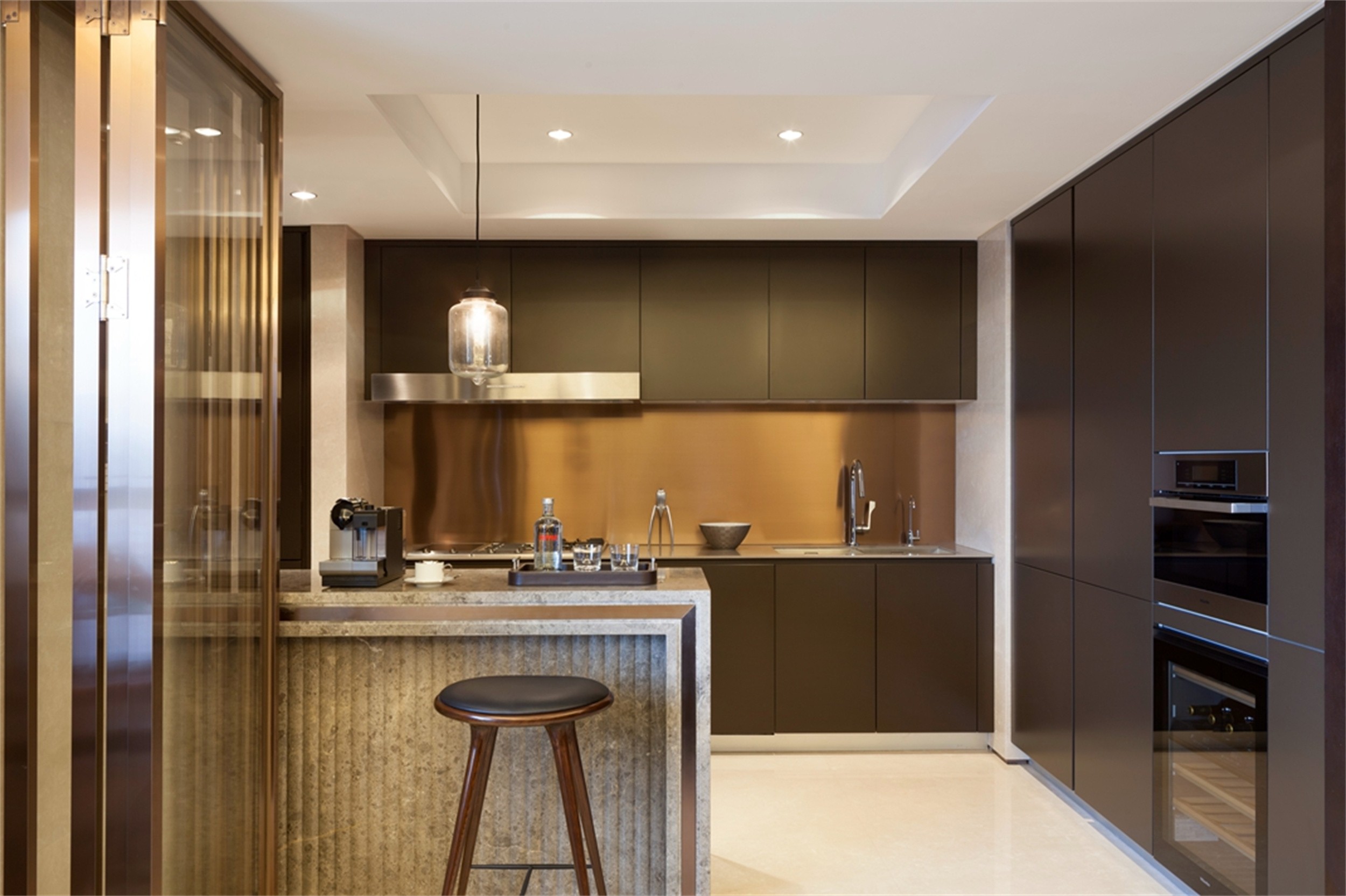Kitchen cabinet and door panel usage instructions
1. Do not allow the kitchen cabinet and door panels to be immersed in water. Always wipe with a dry cloth to avoid expansion and deformation of the panels.
2. Do not contact with chemicals. Do not store volatile chemicals in the kitchen cabinet to avoid discoloration and corrosion of metal parts.
3. Do not store the selected cutlery directly in the kitchen cabinet, and wipe it out before storing it in storage to avoid moisture deformation of the kitchen cabinet.
4. Do not place heavy objects in the upper kitchen cabinet. Place them on the bottom of the cabinet to avoid excessive deformation of the kitchen cabinet.
5. Do not let children near the kitchen cabinet's sharp surface, glass and metal parts, etc., so as not to cause injury.

Artificial stone countertops
1. Do not place high-temperature objects directly on the artificial stone countertops. Use a heat-insulating mat to prevent the artificial stone countertops from being damaged by scalding.
2. Do not operate directly on artificial stone countertops. Use cutting boards to avoid artificial stone countertops being scratched or leaving marks.
3. Do not allow water to remain on artificial stone countertops for a long time. Keep it dry as much as possible to avoid watermarks on artificial stone countertops.
4. Do not allow chemicals to come into contact with artificial stone countertops to avoid discoloration of artificial stone countertops.
5, do not hit or stand on the artificial stone countertops, so as not to break the artificial stone countertops.

Kitchen Cabinet and door cleaning method
1. Do not damage the door surface.
2. General grease stains should be wiped with a neutral detergent or soapy water, and wiped with a dry cloth; more stubborn stains should be wiped with a decontamination powder and a scouring pad. Do not wipe with a high concentration or corrosive solvent.
3, metal parts every six months to the active parts of lubricating oil maintenance.
Artificial stone countertop of kitchen cabinets cleaning method
1. General dirt is wiped with a neutral detergent or soapy water and wiped dry with a dry cloth.
2. More stubborn oil or tea watermark first with 800 # -1200 # water sand paper polishing, and then wipe clean with a scouring pad.
3. Burns, scratches, knife marks first with 400#-600# water sandpaper polishing, and then clean with a scouring pad The overall number will be different.


